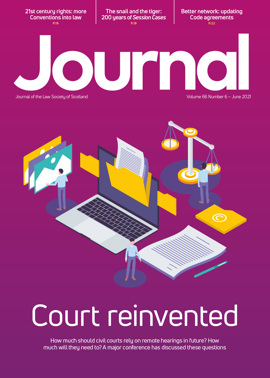Sport: Where now for worker status?
Prior to COVID-19 engulfing workplaces across the land, and furlough, working from home and health and safety becoming the key focus of most employers, employment status was the key topic focusing the mind of HR professionals. Whether this concerned the status challenges dominating HR reporting or the recent extension of IR35 legislation to the private sector, whether someone was an employee, a worker or genuinely self-employed was a key issue and required considerable attention. It remains so now in 2021, not merely with IR35 taking hold, but with the recent decision of the Supreme Court in Uber BV v Aslam [2021] UKSC 5.
The decision conveyed various points, seeking to provide a definitive and easily understood assessment of when an individual is not self-employed and instead has worker status. The contract and its terms have a part to play, but it is not the starting point and does not constrain parties as has traditionally been argued. The assessment, it is now said, is to look more at the relationship in practice and assess it for what it is, when carried out, and not focus merely on the documented terms of the relationship.
Whilst no one factor is determinative of the existence of a worker or employee relationship, “control” is very important and the extent to which control is exerted over the individual, by the business, will be very much key to determining the person’s applicable employment status. The decision also has application to the question of whether someone is an employee, where the concept of mutuality is an imperative question.
The Varnish truth
In sport, the highest profile status challenge of recent years was brought by disgruntled former professional cyclist Jess Varnish, in a decision predating the Supreme Court’s ruling in Uber: Varnish v British Cycling (UKEAT 2022/22/LA). Could Uber lend weight to arguments brought by athletes and change the landscape of how employment law is perceived to apply to athletes and sports persons?
The decision in Varnish analysed Varnish’s relationship with British Cycling and in doing so, on one reading of the judgment, significant emphasis was placed on the documentation in place between Varnish and British Cycling. In Uber, the focus was not necessarily on the paperwork in place. In both cases, however, there was an assessment of what was happening in practice; in Uber the conclusion reached was that such was the level of control over the individuals, and such was the existence of many facets in the relationship that were consistent with a worker relationship, the documentation was inconsistent and not truly reflective of the relationship in practice. The well established principles from Autoclenz [2011] UKSC 41 allowed a focus on the practice, where the documentation was not reflective of what occurred in practice.
In Varnish, however, one of the, if not the, key findings was that in reality, Varnish was not performing “work” for British Cycling. Instead, she was pursuing her sport seeking to perform at the highest level, through the grant aided relationship made possible by UK Sport, supported by British Cycling. There was no bargain of wages, or remuneration, for work. This reality did not – and does not – hinge on the documentation in place, or the labels attached to aspects of the relationship, in marked contrast to a typical working relationship.
Beware of ballwatching
It is more likely that the Uber judgment will be useful to critiquing other relationships within sport, including in relation to performance support roles, such as coaching, analysis, operations and medical, where self-employed consultant style relationships can still often be found, and the intended exclusion of workplace rights agreed between parties when relationships commence.
With IR35 now applicable to private sector relationships from April 2021, employers in sports will need to take care to reassess any atypical relationships and ensure that status assessments are performed both for the purposes of employment rights and also for the purposes of taxation. Whilst employment rights assessments and taxation assessments are performed for different reasons, employers in sport who do not carefully control atypical relationships could easily be met with both employment rights claims and also difficulties with HMRC for the payment of tax and national insurance at appropriate rates.
Not only must relationships be carefully designed on paper and in reality: the relationships must be consistently carried out in practice in accordance with their original design and intent. Employers in sport, like all sectors, should continue to be vigilant and routinely audit their workplace relationships, to avoid incurring unforeseen difficulties.
Perspectives
Features
Briefings
- Criminal court: Doing justice with benefit fraud
- Corporate: Clarity is king – win some, lose some
- Agriculture: TFC provides holdings compliance guide
- Employment: Unintentional wrongs and injured feelings
- Sport: Where now for worker status?
- Intellectual property: IP and artificial intelligence
- Property: EWS1: another hurdle for the lawyer
- Scottish Solicitors' Discipline Tribunal
In practice
- Society's new office bearers step up
- AGM hears of a challenge met
- How do you manage the bank manager?
- Letters of engagement: one size does not fit all
- Climate change, inequality and the profession
- Fairness and justice: nice and simple does IT
- Profile: Craig Connal
- The Eternal Optimist: Difficult, or just different?
- Ask Ash: An anxious return







